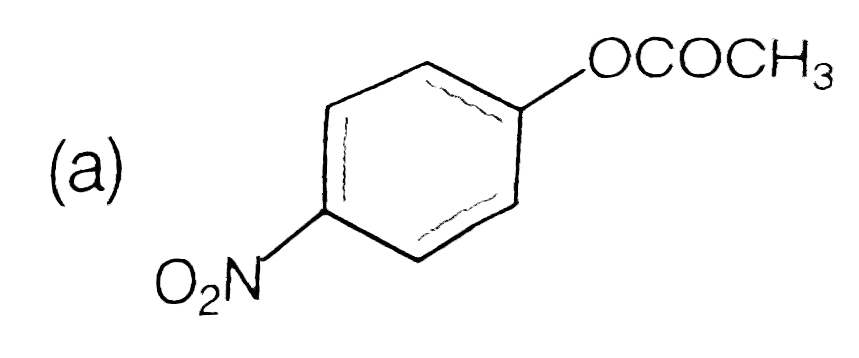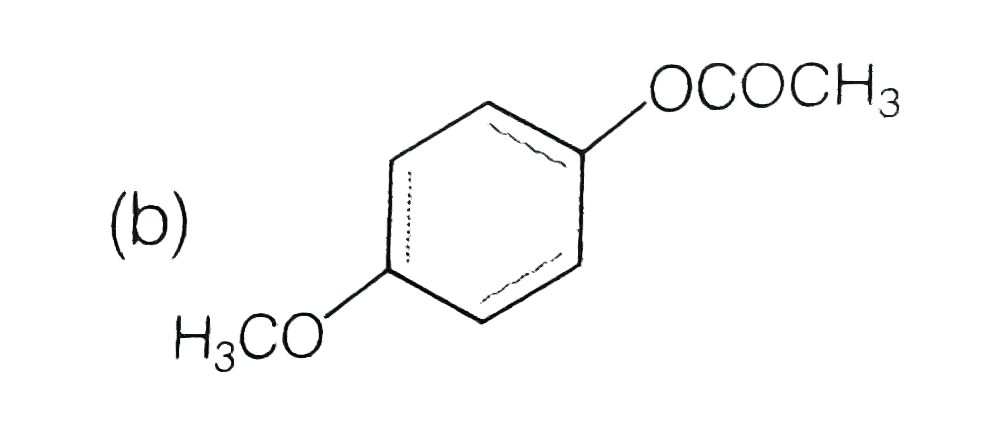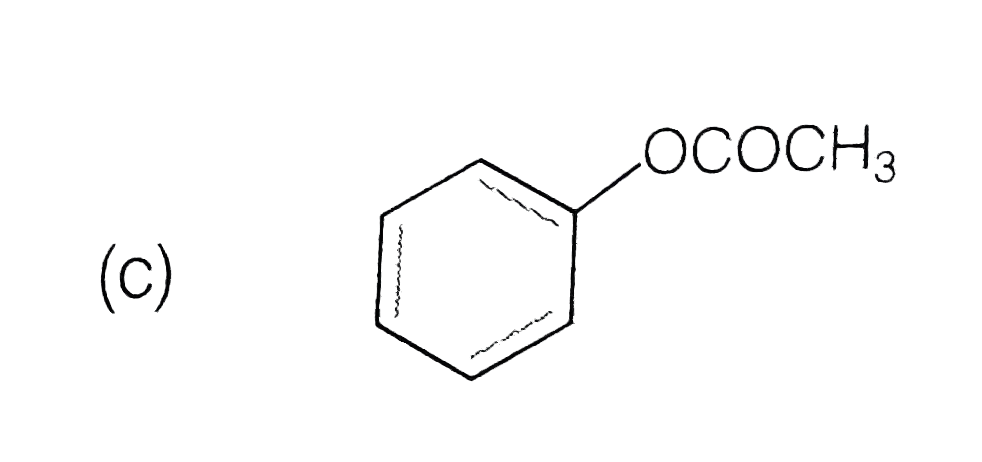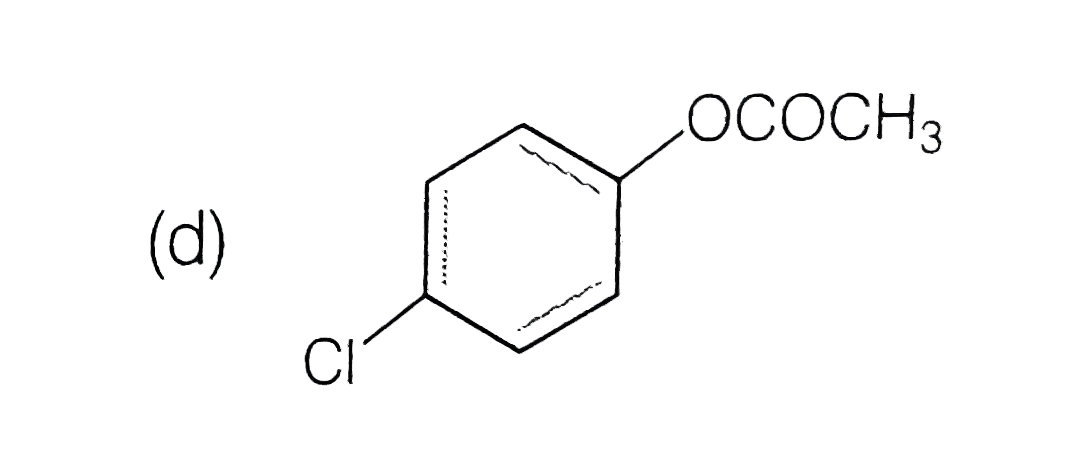Which of the the following esters gets hydrolysed most easily under alkaline conditions?




The correct Answer is:A
To determine which ester gets hydrolyzed most easily under alkaline conditions, we will analyze the given options based on the effects of substituents on the aromatic ring of the esters. The options are:
a. 4-nitrophenyl acetate
b. 4-methyl acetate
c. Phenyl acetate
d. 4-chlorophenyl acetate
1. Understanding Hydrolysis of Esters: Hydrolysis of esters involves the reaction of the ester with water, which can be catalyzed by hydroxide ions (OH-) in alkaline conditions. The ease of hydrolysis depends on the stability of the ester and the ability of the nucleophile to attack the carbonyl carbon.
2. Identifying Electron-Withdrawing and Electron-Donating Groups:
- Electron-withdrawing groups (EWGs) stabilize the carbonyl carbon by reducing electron density, making it more susceptible to nucleophilic attack.
- Electron-donating groups (EDGs) increase electron density on the carbonyl carbon, making it less reactive towards nucleophiles.
3. Analyzing Each Option:
- 4-nitrophenyl acetate: The nitro group (NO2) is a strong electron-withdrawing group (EWG) that exerts a -M (mesomeric) effect, decreasing the electron density on the carbonyl carbon and making it more susceptible to nucleophilic attack.
- 4-methyl acetate: The methyl group (CH3) is an electron-donating group (EDG) that increases electron density on the carbonyl carbon, making it less reactive.
- Phenyl acetate: The phenyl group (C6H5) has a -I (inductive) effect but does not have a significant -M effect. It does not stabilize the carbonyl carbon as effectively as an EWG would.
- 4-chlorophenyl acetate: The chlorine atom (Cl) has a -I effect but does not have a strong -M effect. It also does not stabilize the carbonyl carbon as effectively as the nitro group.
4. Conclusion: Among the given esters, 4-nitrophenyl acetate has the strongest electron-withdrawing effect due to the nitro group, making it the most susceptible to hydrolysis under alkaline conditions. Therefore, it will hydrolyze most easily.
Final Answer:
4-nitrophenyl acetate (Option a)
b. 4-methyl acetate
c. Phenyl acetate
d. 4-chlorophenyl acetate
- Electron-withdrawing groups (EWGs) stabilize the carbonyl carbon by reducing electron density, making it more susceptible to nucleophilic attack.
- Electron-donating groups (EDGs) increase electron density on the carbonyl carbon, making it less reactive towards nucleophiles.
- 4-nitrophenyl acetate: The nitro group (NO2) is a strong electron-withdrawing group (EWG) that exerts a -M (mesomeric) effect, decreasing the electron density on the carbonyl carbon and making it more susceptible to nucleophilic attack.
- 4-methyl acetate: The methyl group (CH3) is an electron-donating group (EDG) that increases electron density on the carbonyl carbon, making it less reactive.
- Phenyl acetate: The phenyl group (C6H5) has a -I (inductive) effect but does not have a significant -M effect. It does not stabilize the carbonyl carbon as effectively as an EWG would.
- 4-chlorophenyl acetate: The chlorine atom (Cl) has a -I effect but does not have a strong -M effect. It also does not stabilize the carbonyl carbon as effectively as the nitro group.
4-nitrophenyl acetate (Option a)
Similar Questions
Knowledge Check
Which of the following ethers will get hydrolysed by HI ?
A B
B C
C D
D
Which of the following has ester linkage?
ANylonBBakeliteCTeryleneDPVC
Which of the following salts is not hydrolyse?
View SolutionWhich of the following chlorides hydrolyses most easily?
View SolutionWhich of the following undergoes Hydrolysis most easily:
View SolutionWhich of the following trihalides is not hydrolysed
View SolutionWhich of the following halide cannot hydrolysed ?
View SolutionWhich of the following has ester linkage ?
View Solution
